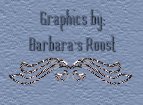

The Digges Family Lineage: 1200 to present
ARMS: Gules (meaning heraldic color red) on a cross argent (meaning silver), five eaglets displayed sable.
CREST: An eagle's leg coupled at the thigh sable, surmounted by three ostrich feathers argent.

The first thirteen generations of the Kentish family of DIGGES were recorded by the knight Sir Dudley Digges of Chilham Castle, Kent, England at the visitation of Kent in 1619. The record is repeated on his tomb in the Church of St. Mary, Chilham, England.
CHILHAM CASTLE TODAY

Generation 1/ Roger de Mildenhal, called Digges, had a son -
Generation 2/ John Digges, who, in the 33rd year of King Henry III, bought the estate called Bynwitu in Canturia, and at an opportune time carried thither his brothers. He is buried there, and his son -
Generation 3/ John Digges, in the 15th year of King Edward I, established as a gift the first Franciscan friary in England at Canterbury (still standing) He married Agnes de Sandrino. They had three sons: Thomas, John (a priest), and Daniel (a priest), of whom -
Generation 4/ Thomas Digges, in the 5th year of Edward II, married one of the daughters of the deHaute family. Issue: four sons, named John, Edmund (a priest), Roger, and Thomas, of whom -
Generation 5/ Roger Digges, armor bearer of the parish of Barham in Kent, in the 49th year of King Edward III, married Albina, who is buried in the church of Barham. Their son -
Generation 6/ John Digges of Barham, armor bearer, in the 22nd year of King Richard III, married Juliana, daughter and heiress of Roger Northwood, and had John, Isabella (a nun), Joanna, Cicilia, and Clinton, of whom -
Generation 7/ John Digges of Barham, armor bearer, married Juliana, sister and heiress of James Horne, and had Oldomarus and John, of whom -
Generation 8/ John Digges of Barham, armor bearer, in the 19th year of King Henry VII, married Joanna, daughter of Maurice Brume of Barham, and had -
Generation 9/ John Digges of Barham, armor bearer, who married Joanna, daughter of Gervaise Clifton, and had -
Generation 10/ Jacob Digges of Barham, armor bearer, whose second wife was Philippa, daughter of John Engenham of Chart, and had John and Leonard, of whom -

Generation 11/ Leonard Digges of Wooten Court ("the English Mathematician") was educated at Oxford and was a skilled architect, expert surveyor, and a considerable author. He wrote "Tectonican" in 1556, "Pantometria" in 1571, and "A Prognostication Everlasting" during the period 1553-1556. The latter was an astrological work. He married Sarah Wilsford of Hartridge, daughter of Thomas Wilsford, and had Maria, Thomas, Anne, and Sarah, of whom -
Generation 12/ Thomas Digges was educated at Cambridge and became one of the most excellent mathematicians of his time. He became Muster Master of Forces sent to the Netherlands. He entered Parliment in 1572. He constructed the fortifications of Dover Harbor and served in the Low Countries in 1593-1594. He wrote many treatises on science and military engineering. He died August 24, 1595 and is buried in the Church of St. Mary, London. He was married to Lady Ann St. Leger, daughter of Sir George de Neville, K.B. and K.G., third Baron of Abergavenny. Through this marriage, the Digges family traces their descent from Edward III, King of England(see "Americans of Royal Descent"), from William the Conquerer, and from the older Scottish kings; also from Queen Margaret of Scotland (the canonized saint), and Pope Innocent IV. Children of Thomas Digges and Lady Ann St. Leger were Dudley and Leonard, of whom -
Generation 13/ Sir Dudley Digges (1583-1639) graduated from Christ Church, Oxford in 1601. He was ambassador to Russia (1618) and Special Ambassador to Holland (1620). He authored "The Worthiness of Warre and Warriors" (1604), "Rights and Privileges of the Subject" (1642), and "The Compleat Ambassador" (1655). He sat in Parliment for Tewkesbury and later for Kent. Russia named Cape Digges for him. He was appointed Master of the Rolls in 1630 under King Charles I. He was a friend of Henry Hudson and, in 1610, helped finance that explorer's last voyage, where Cape Digges and Digges Island were named for him. In 1631 he was appointed Commissioner to consider how the plantation of Virginia "now standeth", and what commodities could be raised in those parts. He erected Chilham Castle, Chilham, Kent, England (completed in 1616). He was knighted by King James at Whitehall on April 29, 1607. He was appointed Commissioner for Virginia Tobacco in 1634. He died March 18, 1639, and the wisest men reckoned his death among the public calamities of those times. His wife was Lady Mary, youngest daughter and co-heir of Sir Thomas Kempe of Olantigh, Kent; whose ancestors included Cardinal John Kempe, Archbishop of Canterbury in 1454, and Thomas Kempe, Bishop of London. Sir Dudley Digges and Lady Mary Kempe had eight sons and three daughters, of whom the fourth son was -

Generation 14/ Edward Digges, Colonial Governor of Virginia; born at Chilham Castle, Kent, England; entered Gray's Inn, May 1637; emigrated to Virginia in 1650. His Plantation, "Bellefield", near Yorktown was where "E.D." tobacco was arised, which never failed to bring in England one shilling when other tobacco would not bring three pence. He was the first promoter of silk culture in America. The ancient mulberry of Williamsburg were planted at his order for silk culture. He was elected Governor by the Assembly of Virginia in March 1655 and was sent to England in 1659 as the Colony's Agent to secure the rights of the Colony. He helped in settling a long-standing controversy between the Colony of Virginia and Lord Baltimore in Maryland, and was Auditor General of Virginia from 1670 to 1675. His wife was Elizabeth Pye or Page. They had six sons and seven daughters, of whom the eldest was -
Generation 15/ Colonel William Digges, Justice of the Peace in 1671, Captain of the Horse in 1674. During Bacon's Rebellion in 1676, he is said to have cut off one of Thomas Hansford's fingers. He was Sheriff of York County in 1679, and moved to St. Mary's County, Maryland in 1680. He was made a member of the Provincial Council of Maryland as Colonel, and was Deputy Governor of Maryland. He patented extensive lands in the Colony, was Lord of "Warburton Manor" in Prince George County on the Potomac. He inherited "Bellefield", his father's estate in Virginia, and also owned a number of different estates in various counties in Maryland. He commanded the Catholic Forces at St. Mary's during the Protestant Revolution. He married Elizabeth (Sewall) Wharton, widow of Dr. Henry Wharton. The will of Colonel Digges mentions ten children: Edward, William, Charles, Dudley, John, Nicholas, Jane, Elizabeth, Ann, and Mary, of whom -

Generation 16/ John Digges of Prince George County and Charles County, Maryland received from Lord Baltimore on October 11, 1735 a patent for 10,000 acres called "Digges Choice" which included the valley of Conewago in what is now York and Adams Counties, Pennsylvania. Here he started the first white settlement in that region west of the Susquehanna River. His wife is thought to have been Eleanor Carroll. Their children were: Edward, William, Henry, Dudley, John (a priest of the Society of Jesus, Eleanor, and Elizabeth, of whom -
Generation 17/ Henry Digges of Charles County, Maryland married Jane Brent, and had John Henry, Francis, Robert, George, William, and Polly, of whom -
Generation 18/ John Digges of Charles County, Maryland married Mrs. Jane (Smith) Neale, a widow. Their children were John Henry and Mary Jane, of whom -
Generation 19/ John Henry Digges of Charles County, Maryland (born Jan 2, 1813 - died Aug 29, 1859) was married Jan 10, 1838, to Mary E. Clements of Charles County, Maryland (born Oct 19, 1814 - died Nov 29, 1877). She was a descendent of Helen Calvert, who was a daughter of the first Lord Baltimore, George Calvert; and also of Governor Thomas Green of the province of Maryland. Their children were: Eugene, Jane, Hortense, John, Thomas, Elizabeth, Henry, Mary, Eudochia, and Robert Dudley. The eldest son -
Generation 20/ Eugene Digges, of Port Tobacco, Charles County, Maryland and of Austin, Texas was born Oct 27, 1838 and died June 29, 1899. On Nov 11,1875 he married Mary, the daughter of James Alexis Iglehart. Eugene Digges was a graduate of Georgetown University and the University of New York. Their children were: Eugene Thomas, Mary Agnes (died young), Alexis Iglehart (died young), John Henry (who married Adele Bryan Head), James Alexis, Joseph Dudley, Llewellyn (who married Baroness Maria Nuncia Lassoto de Lassotovich of Verona, Italy), Mary Deborah (who married William Locke Taylor), and Mary Elizabeth. Of these -
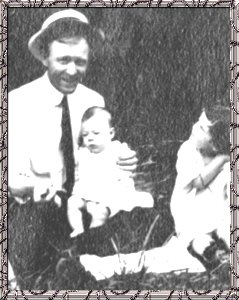 Generation 21/
Generation 21/
John Henry Digges and his wife Adele Bryan had these children: John Henry (who married Mary Jane Tucker), Laurence Eugene (who married Betty Lee), Helen Deborah (who married James Wallace Meyers), Sister Laurentia of the order of St. Joseph, who was Mary Frances, a daughter of Adele Digges by her first husband and adopted by John Henry. (photo at left of John Henry, with children John Henry Jr. and Mary Frances.) Of these -
Generation 22/John Henry (known as Tim)married Mary Jane Tucker on April 13, 1935.
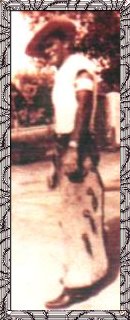
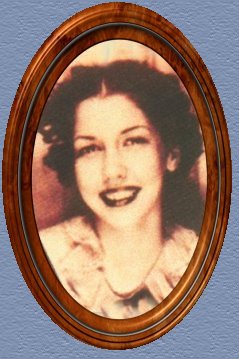
Generation 22 pictured below:
John Henry(Tim),Mary Frances(Boots),Helen Deborah(Debbie), and Laurence Eugene(Larry)
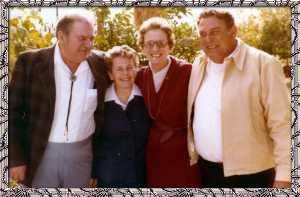
Generation 22/ John Henry Digges (1914-1985) married Mary Jane Tucker (1917 - ) and their children are: Mary Margaret (Peggy), John Henry III, Timothy Bryan (Storm) and Susan Frances. Of these -
(We will continue to update this page 'til done! Check back often!!)
OR......you can check out what is "going on" through Peggy
by visiting



